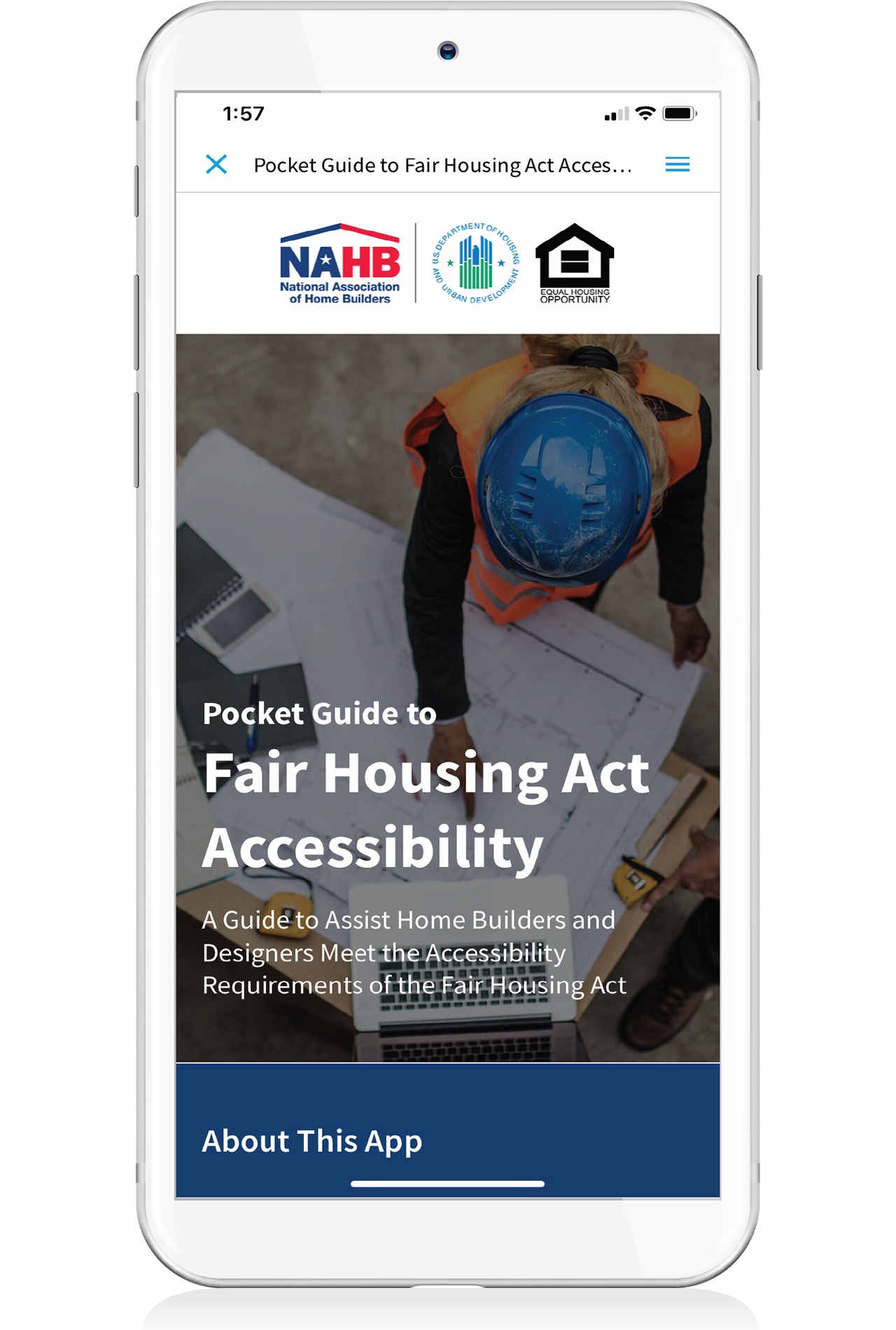The Pocket Guide to Fair Housing Act Accessibility App
This Pocket Guide to the Fair Housing Act (FHA) is a free app designed to help homebuilders, contractors, and designers determine if the FHA’s accessibility requirements apply to their housing project and, if so, provide a quick reference guide to the seven basic accessibility requirements for compliance with the law.
Key Features:
- Helps determine if the FHA applies to your housing project
- Provides quick access to the seven “design and construction” requirements
- Enables access from anywhere
Through this free tool, NAHB strives to increase FHA compliance within the housing industry and facilitate greater access to multifamily housing for persons with disabilities.
The information contained in this Pocket Guide is intended to provide a basic, non–exhaustive guide to understanding and conforming with the design and construction requirements of the FHA. While grounded on the U.S. Department of Housing and Urban Development’s (HUD) Fair Housing Act Design Manual, this guide is not a safe harbor for compliance with the FHA. Nor does it address any federal, state or local laws or regulations prohibiting discrimination in the sale, rental or financing of dwellings and other housing–related transactions. The user must consult the actual statutory and regulatory standards for definitive FHA compliance.
Unless otherwise noted, references in this guide to the American National Standards Institute (ANSI) A117.1 technical criteria for accessible facilities means the 1986 ANSI A117.1 standard. Additional technical and scoping criteria references are made to the FHA, HUD’s implementing regulations and the Fair Housing Accessibility Guidelines.
The work that provided the basis of this application was made possible in part by an Education and Outreach Initiative grant from the U.S. Department of Housing and Urban Development. The substance and findings of the work are dedicated to the public.

Learn more about the accessibility requirements of the Fair Housing Act through the four-part webcast series below.






